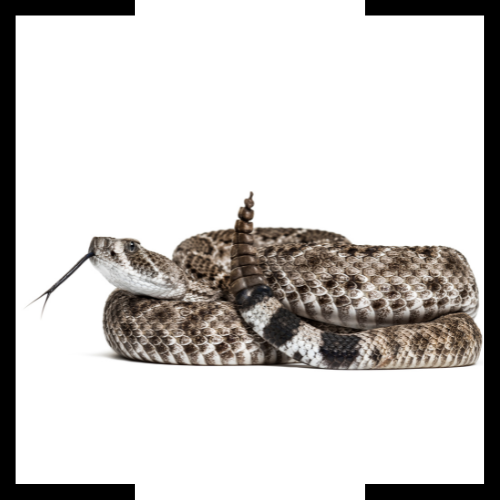Nestled within Idaho's breathtaking landscapes lies a silent yet significant challenge for homeowners – snake infestations. While these creatures play a key role in the ecosystem, their presence around residential areas can lead to various problems and risks.
Common Problems For Homeowners
The diverse population in Idaho presents homeowners with a spectrum of challenges. Among the most prevalent issues is property damage inflicted in a search for shelter and prey. Snakes may wreak havoc on landscaping, gardens, and structures such as sheds and fences, leading to costly repairs and alterations. Furthermore, the presence of venomous species adds a layer of concern, with potential health risks for humans and pets. Beyond physical harm, encountering them can induce fear and anxiety, impacting the quality of life for homeowners and their families.
Recognizing the signs of activity is crucial for homeowners to address infestations effectively. Shed skins, tracks, and sightings are common indicators, highlighting the need for vigilant observation. In Idaho, a variety of species inhabit different habitats, exhibiting unique behaviors and preferences. From the docile garter to the elusive rattlesnake, understanding the characteristics of these species is essential for implementing targeted management strategies.
Types Found In Idaho:
Idaho's diverse landscape provides habitat for several species, each with its own distinctive traits. Commonly encountered serpents include:
- Western Rattlesnake (Crotalus oreganus): Known for their distinctive rattle and venomous bite, it inhabits a range of habitats, from deserts to forests.
- Gopher Snake (Pituophis catenifer): Often mistaken for rattlers due to their similar appearance and defensive behaviors, they play a valuable role in controlling rodent populations.
- Western Yellow-bellied Racer (Coluber constrictor mormon): With their slender bodies and impressive speed, Western Yellow-bellied Racers are adept hunters of small prey, including rodents and insects.
- Northwestern Garter (Thamnophis ordinoides): Recognizable by their vibrant colors and stripes, Northwestern Garters are commonly found near water sources, preying on amphibians and fish.
Behaviors And Habits
As winter's chill spreads across regions like Idaho, snakes enter a dormant state known as brumation to survive the harsh conditions. Hidden away in underground burrows or nestled in rock crevices, they wait for the return of warmer weather, minimizing their presence in the colder months. This period of inactivity is critical for their survival, yet it also means they are less likely to be encountered during winter.
With the arrival of spring and its warmer temperatures, snakes emerge from their hidden refuges, seeking sunlight to regulate their body temperature. This reliance on external heat sources makes them more visible, often found basking in open areas. While this behavior is a natural part of their lifecycle, it's also when people should exercise increased caution and awareness of their surroundings, especially in natural habitats.
Snakes are opportunistic hunters, feeding on small mammals, birds, and amphibians. Their diet and hunting tactics, which may include ambush, highlight their role in controlling pest populations. However, for those wary of snakes, it's a reminder of the importance of keeping living spaces clear of debris and potential rodent harbors to reduce unwanted encounters.
In situations where snakes feel threatened, they may adopt defensive postures, such as coiling or making a rattling sound, to deter potential threats. These behaviors serve as a warning and underscore the importance of giving snakes space if encountered. Recognizing and respecting these warning signs can prevent confrontations and ensure safety for both humans and snakes.
Professional Solutions
In addressing infestations, homeowners are strongly encouraged to enlist the services of professional wildlife removal companies. These experts possess the knowledge, experience, and specialized equipment necessary to manage issues responsibly and effectively. Professional removal services employ humane techniques while adhering to legal regulations, ensuring the well-being of both humans and snakes alike. By entrusting the task to professionals, homeowners can avoid the potential risks associated with DIY interventions and achieve lasting solutions to their snake-related challenges.
For expert assistance and protecting your home, contact Agricole Wildlife Solutions. Our dedicated team of professionals is equipped with the expertise and resources to provide tailored solutions to meet your specific needs, ensuring a swift and effective resolution.
Frequently Asked Snake Questions
Q1. Are there any natural predators of snakes in Idaho that can help control their population?
A1. Idaho is home to several predators that prey on them, including birds of prey such as hawks and owls, as well as larger mammals like coyotes and raccoons. While these predators can help control populations to some extent, they may not provide complete protection against infestations. Implementing professional snake-proofing measures remains crucial for comprehensive control.
Q2. Do snakes have specific preferences for certain types of landscapes or environments in Idaho?
A2. They exhibit preferences for particular habitats and environmental conditions. In Idaho, they can be found in a variety of landscapes, including forests, grasslands, wetlands, and rocky areas. Certain species may prefer specific microhabitats within these landscapes, such as rocky outcrops for basking or areas with abundant vegetation for cover and hunting. Understanding these habitat preferences can inform strategies for managing infestations effectively.
Q3. Can climate change impact behavior and distribution patterns in Idaho?
A3. Climate change can have significant effects on behavior and distribution patterns in Idaho and beyond. Changes in temperature and precipitation patterns may alter habitat suitability, leading to shifts in their distribution and abundance. Additionally, warmer temperatures may result in earlier emergence from hibernation and extended activity periods, potentially increasing encounters with humans. Monitoring and understanding these changes can help inform adaptive management strategies for mitigating the impacts of climate change on snake populations and human


